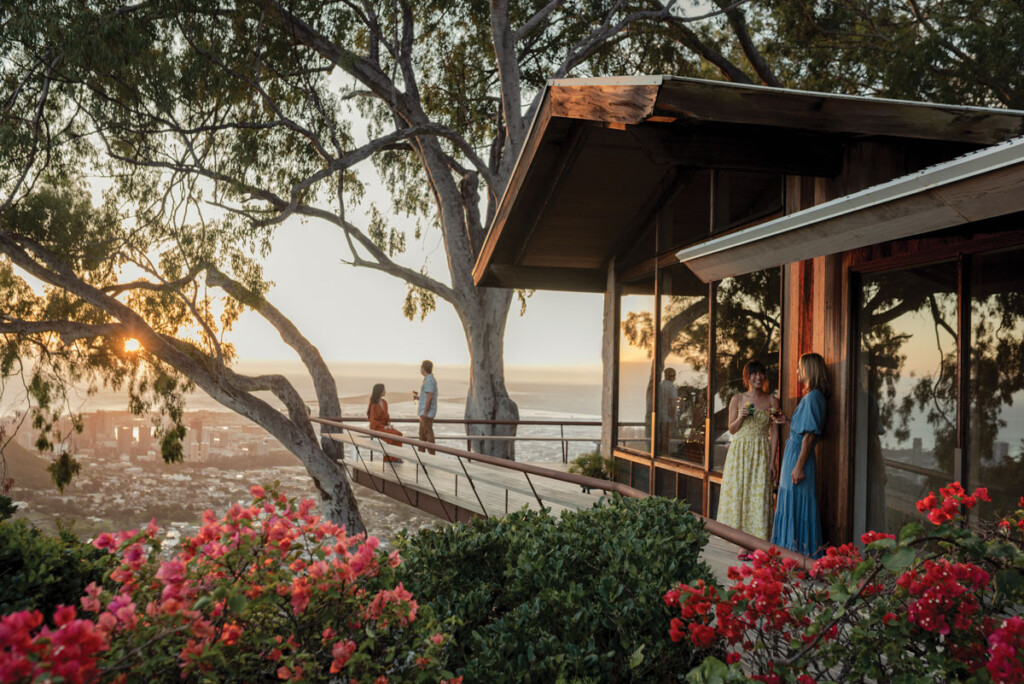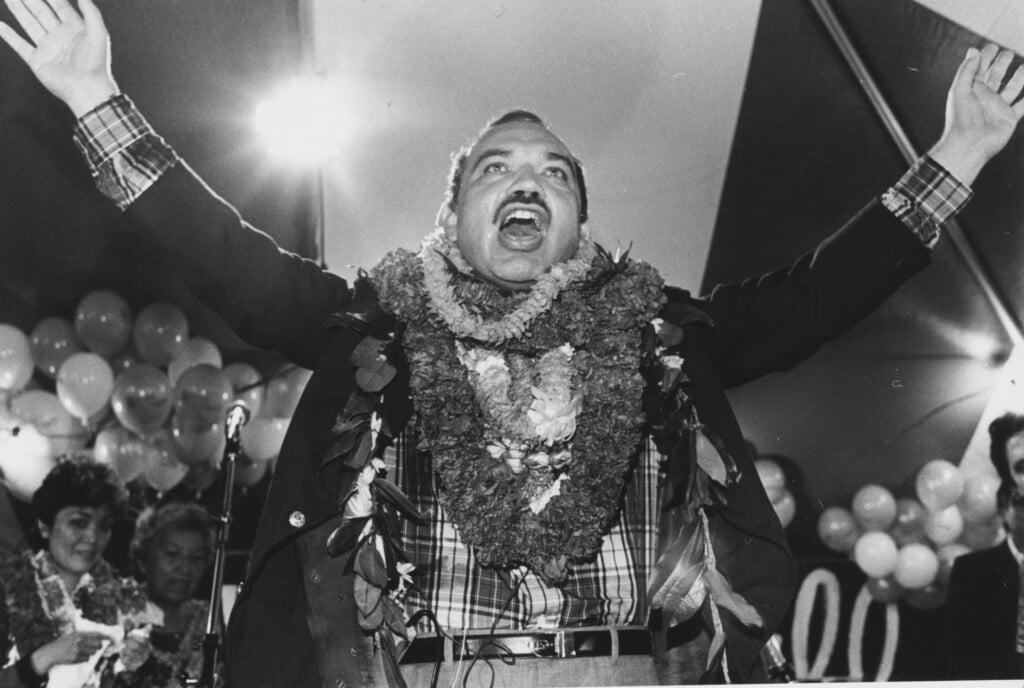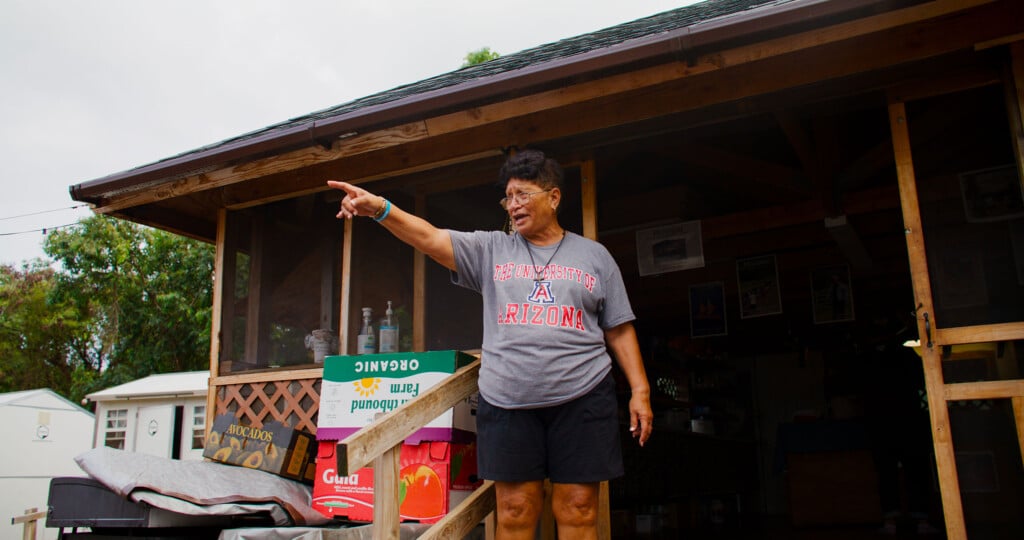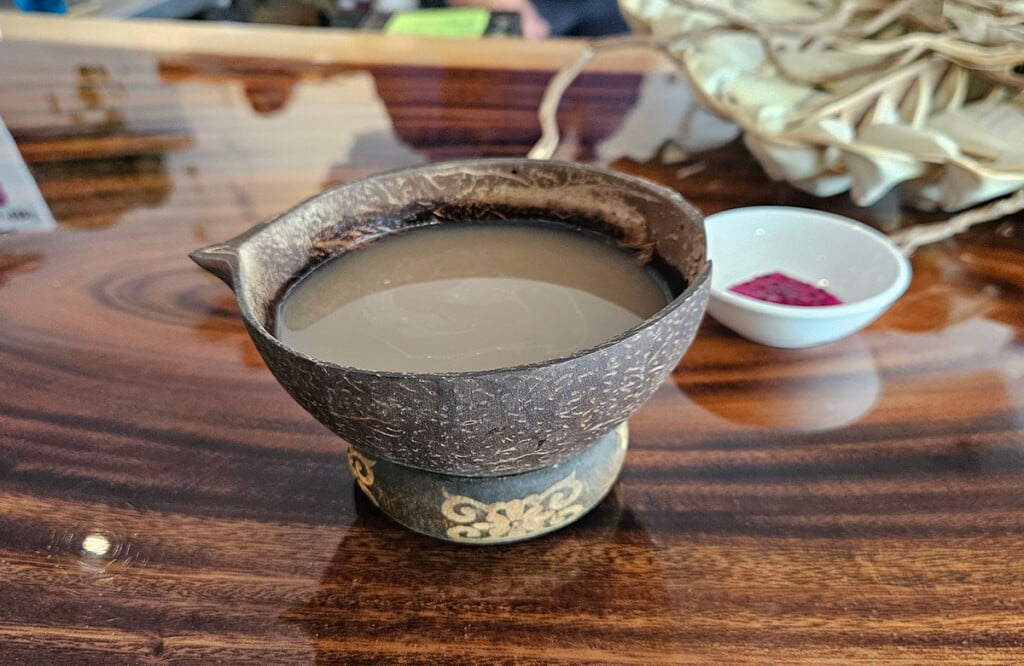Give Big Hawai‘i: Five Ways to Volunteer
(Sponsored) Giving isn’t just about money. Make a difference in the community by donating your time.
Local nonprofits likely would agree that time is the most valuable currency, especially when it comes to volunteers who step up to help with critical needs. And more kōkua is always needed.

Photo: Michelle Ewart, ME Creative
Feeding the Hungry
Aloha Harvest has 1,200 registered volunteers, but the food rescue and rehabilitation program is always looking for more people to join its cause. “We’re a really small team,” volunteer coordinator Madelaine Taylor says. “Drivers and admin staff included, we have well under 20 employees.”
The organization, not affiliated with Hawai‘i Foodbank, accepts food from restaurants, grocery stores and other places, then gets it to people in need. While more than 33 million pounds (16,500 tons) of food has been retrieved on O‘ahu since Aloha Harvest was founded in 1999, the nonprofit continues to seek more volunteers to host collection drives and to help on box assembly days.
Monthly boxing days are currently slated for November and December at the Aloha Harvest storage facility in Kaimukī. They’re open to people of all ages and are great opportunities for families and friends to come together to help the community, particularly around the holidays. “We’ve had 8- and 10-year-olds assisting us, and they really enjoy it,” Taylor says. “I have a 2-year-old, so she’s been to boxing events, strapped to my husband’s back.”
In 2023, Aloha Harvest started a volunteering program for groups of people. So if there’s a group of 10 to 20 people from work or church, for example, Taylor and the team will try to coordinate a custom volunteer day. These volunteers often ask if they can gather food from Aloha Harvest’s partner farms. “That’s definitely been the most popular option, just because it’s unique,” Taylor says. “A lot of people live in the city, and the opportunity to get out into the country and be out on the farm is a really unique aspect of the volunteering that we offer.”
Volunteers also help with food pickup, and if it’s something they do regularly and it’s out of their way, Aloha Harvest will help offset their fuel costs with gift cards. “We try to remove as many barriers as possible for people to volunteer,” Taylor says.
alohaharvest.org, @alohaharvest

The mentoring relationships fostered by Big Brothers Big Sisters Hawai‘i support children’s social and emotional development. Photo: Courtesy of Big Brothers Big Sisters Hawai‘i

Photo: Courtesy of Big Brothers Big Sisters Hawai‘i
The Power of Mentorships

Photo: Courtesy of Big Brothers Big Sisters Hawai‘i
For those seeking a one-on-one volunteer opportunity, Big Brothers Big Sisters Hawai‘i is always looking for adults to be part of its mentoring program, which serves about 600 children every year. “Statistically, 1 in 3 children don’t have a sustained mentor in their life,” Chief Operations Officer Tyler Kurashige says.
BBBSH is looking to change that for the children in its program, who live on O‘ahu, Maui and Kaua‘i. Most of them are from single-parent homes. Basically, the mentors are friends for the kids, Kurashige says, explaining that after mentors go through the application and screening process, they are asked for minimum one-year commitments. During that year, each volunteer spends time with a child twice a month. The children are between 6 and 18, and volunteers must be at least 18. Most of the children are boys, so BBBSH’s greatest need is for male volunteers.
And after a pandemic hiatus, a program aimed at teen volunteers will resume in spring 2024. High school students will be paired with elementary-aged children, and they’ll spend time together at school, once a week while classes are in session. “Every child, every volunteer, every parent and guardian that’s involved in our programs is assigned to somebody that provides support,” Kurashige says. “People understand what a case manager is, and that’s the equivalent of what we provide. That person checks in to ensure the relationship is going in the right direction—that it is positive and safe.”
The support provided to volunteers helps alleviate concerns that some people might have about mentoring, especially if they haven’t worked with children before. “We try to let people know that it’s not as scary as it sounds,” Kurashige says. “We provide a lot of support, and it’s really just about having fun with the kids.”
As BBBSH celebrates its 60th year in the Islands, Kurashige hopes people realize how powerful mentorships can be. “We can close different gaps that we have in our community by supporting kids,” he says. “These little moments that we [create for the] kids … are very powerful, [and] it’s actually very easy to do. We’re just one of the organizations out there that is helping people to make these connections.”

Trainees, instructors and project partners at the Preservation Trades Training Workshop on Kaua‘i. Photo: Courtesy of Historic Hawai‘i Foundation

A tour group after taking the Hawai‘i Capital Historic District Story Map tour. Photo: Courtesy of Historic Hawai‘i Foundation
Sharing Stories About Places
The Historic Hawai‘i Foundation helps its volunteers make a different kind of connection. With its work to preserve historic buildings, sites and communities, the organization roots people to Hawai‘i’s past.
Volunteers are the backbone of the organization, says Andrea Nandoskar, the foundation’s education program manager. They help with setup and breakdown at various events hosted by the foundation throughout the year. “It’s a way to connect with the community and support all the work we do,” Nandoskar says. The group also seeks writers to contribute place-based content for its blog. Rather than covering broad historical topics, the pieces focus on particular areas of Hawai‘i. Volunteers tend to research and write about their favorite places, often with a desire to learn more, Nandoskar says.
Photographers and videographers are also welcome. Photos of historic places are used for the blog, and volunteers take photos during events. Nandoskar says the foundation wants to add videos to its blog posts, showing historic areas around the Islands.
To fulfill its mission, the organization is open to collaborating on new projects. For that, volunteers with expertise in architecture or archaeology are especially sought-after. “We need people who care about places and want to help share stories about places and communities,” Nandoskar says, adding that the foundation celebrates its 50th anniversary next year. “We will have a lot of things happening in 2024, and volunteers who can help … on different islands to tell the stories of these places will be a need in the coming months.”
historichawaii.org, @historichawaiifoundation

Ward Village Moms organized a drive to launch National Diaper Need Awareness Week. Photo: Courtesy of Aloha Diaper Bank

Vive Church Honolulu organized a holiday diaper drive to support families in need. Photo: Courtesy of Aloha Diaper Bank
Supporting Moms and Families
Aloha Diaper Bank is another nonprofit that serves multiple islands. Its main operation is on O‘ahu, and it also has locations on Maui, Kaua‘i and Moloka‘i. Of households with children in diapers, 1 in 2 families struggle to afford diapers, and 1 in 4 parents or caregivers miss work or school when they’re unable to supply their kids with diapers at daycare and have to keep them home, says Cathy Kerch, the organization’s director of programs and operations.
The organization works with more than 30 partner agencies, including social services groups, advocates for homeless people, educators and hospice workers, and has distributed more than 830,000 diapers since its founding in 2019 by a group of moms. Individuals can donate new disposable diapers any time, whether they’re in original packaging or not. “If your newborn grows out of their diapers and you want to give your diapers to us, we’ll take those, even if the packs are open,” Kerch says. Although there is less need for adult diapers, Aloha Diaper Bank will take and redistribute those as well. The same goes for wipes.
Kerch says tourists often donate to the Aloha Diaper Bank as a way to directly help people in Hawai‘i. The organization is registered with Target, Walmart and Amazon, so people can donate diapers online too.
Online ordering is ideal, Kerch says, because having diapers shipped directly to Aloha Diaper Bank keeps supplies in stock at local stores.
Along with making donations, Aloha Diaper Bank seeks volunteers to host diaper drives, typically with their clubs, organizations or businesses. Drives are usually between a week and a month long but can be longer if the hosting group is up to it, Kerch says. The groups bring their collected diapers to Aloha Diaper Bank for sorting and packing, then the diapers are sent to the organization’s partners for distribution. Not only do diaper drives help bring in supplies of diapers, they spread awareness about a growing problem.
As Kerch says, some people don’t realize how much of an impact diapers can have on an ‘ohana. “It really impacts a mother, which impacts the whole family,” she says.
alohadiaperbank.org, @alohadiaperbank

Actress Amy Hill and her newly adopted Fur-Angel pup, Baby-Belle. Photo: Courtesy of Fur-Angel Foundation
Foster a Friend
Fur-Angel Foundation, meanwhile, provides volunteer opportunities for animal lovers seeking ways to help O‘ahu’s houseless canines. President Tiffany Kim explains that unlike humane societies and other shelters, Fur-Angel Foundation doesn’t have a physical location. “We don’t have the typical [setup for] volunteers to come to a facility where you clean the runs or feed the dogs,” she says. “If people are interested in working with the dogs, they could become a foster.”
Since it was founded in 2014, FAF has directed more than 600 dogs into foster care. Its team of three has been inundated with requests to take dogs, and it works with between 35 and 50 of them at any given time. “We’re at the mercy of the space available with our fosters,” Kim says, explaining that all potential fosters go through an orientation to learn about proper pet care, medical issues and what to do in the event of an emergency. There are typically always animals on the waitlist, so a foster won’t have to wait long for a dog.
For those unable to foster, FAF offers other ways for animal lovers to help. Businesses can donate grooming or other services, and photographers are always needed to capture moments at various events throughout the year, including the annual canine carnival every summer. “That’s our biggest fundraiser, so we need a lot of hands to help put that event together,” Kim says.
Kim and her team sometimes need help picking up or dropping off supplies, donations and dogs. There are also opportunities to help with social media, digital content and merchandise creation. “It’s more of a sporadic thing because we don’t have a facility, but there are a lot of ways to get involved,” she says.
Because of the organization’s limited resources and inability to accommodate large numbers of dogs, it sometimes has to limit how many animals it helps. “We love what we do and we’re very passionate about rescue and helping underprivileged dogs, but we cannot do it alone,” Kim says. “It’s the entire community that gets involved.”
furangelfoundation.org, @fur_angel_foundation
“We love what we do and we’re very passionate about rescue and helping underprivileged dogs, but we cannot do it alone.”
—Tiffany Kim










